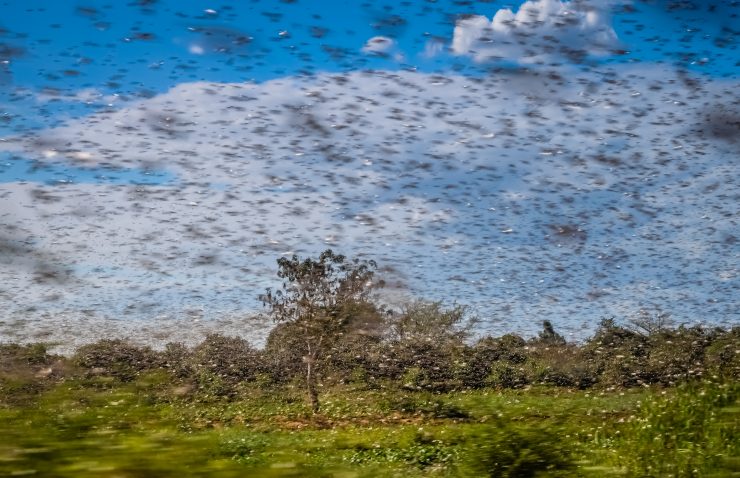According to a Thomson Reuters report, the United Nations (UN) is to test drones equipped with mapping sensors and atomizers to spray pesticides in parts of east Africa battling an invasion of desert locusts that are ravaging crops and exacerbating a hunger crisis. Hundreds of millions of the voracious insects have swept across Ethiopia, Somalia and Kenya in what the UN has called the worst outbreak in a quarter of a century, with Uganda, Eritrea and Djibouti also affected.
A challenge for drone use in such emergencies is the lack of regulation. Many east African countries are still in the early stages of drafting laws, prohibiting drone usage unless in exceptional circumstances and with strict approvals. This lack of regulation makes it harder to deploy drones, especially those flying beyond visual line of sight (BVLOS) and capable of carrying large volumes of liquid.
Officials in Kenya say drones could play an important role given the limited number of aircraft. “Every county wants an aircraft, but we have only five at the moment and they can only be in one location at one time,” said David Mwangi, head of plant protection at Kenya’s ministry of agriculture.
“We have not used drones before, but I think it’s worth testing them as they could help.” Existing drone models are restricted in terms of the volumes they can carry and the distances they can cover due to their size and limited battery life, say entomologists and plant protection researchers.
According to the report, drones can also be used in the aftermath of an infestation. “The other use case for drones is in post disaster mapping,” said Kush Gadhia from Astral Aerial Solutions, a Kenyan firm that seeks to use drones to address development challenges. “Governments need to know the extent of the damage afterwards. Combining larger satellite maps with smaller drone maps – which provide higher resolution images – will give more accurate assessments on the extent crop loss and health.”
The swarms – one reportedly measuring 40 km by 60 km – have already devoured tens of thousands of hectares of crops, such as maize, sorghum and teff, and ravaged pasture for livestock. By June, the fast-breeding locusts could grow by 500 times and move into South Sudan. The impact on the region’s food supply could be enormous – a locust swarm of a square kilometre is able to eat the same amount of food in one day as 35,000 people, says the FAO.
(Image: Shutterstock)
For more information visit:




